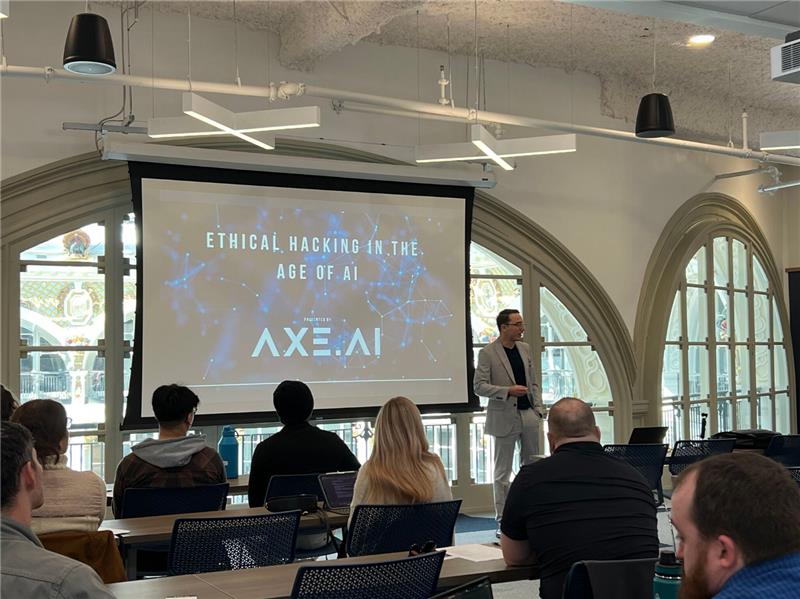

Because most of the time… systems aren’t broken. They’re doing exactly what they were built to do—communicate, cooperate, trust one another. And that’s exactly where the danger lies.
Let me walk you through the spectrum of what we do. We start with vulnerability assessments. This is a technical scan—a report card of what’s out of date, what’s exposed.
Then there’s penetration testing. That’s where we ask: “If an attacker really wanted to get in—how far could they go? And what would it cost the business?”
But then comes the Red Team.
This is where we simulate a true adversary.
We don’t set off alarms. We use the same tools your employees use: PowerShell. Cloud CLIs. Admin consoles.
We blend in.
We move laterally, patiently, quietly. We don’t exploit your systems. We trust them—just like your users do. We live off the land. Take the SolarWinds breach. The attackers didn’t break the system—they became part of it. They used trusted tools, signed software, familiar infrastructure. They didn’t exploit the tech. They exploited the trust baked into every part of the supply chain. And that’s why ethical hacking is about trust. Not just code.
Quick show of hands—how many of you are already using AI tools in some way at work?
And how many of you are still figuring out how to fit AI into your workflows—or how to keep it from disrupting them?
AI is changing the game.
Not because it’s replacing us—but because it’s revealing what matters most.
AI speeds us up. It reduces false positives. It finds patterns in mountains of data. But the real gift of AI? It gives us time to be more human. When an engineer doesn’t have to manually triage 500 alerts… When they don’t have to format 80 pages of reports… They can actually talk to the people they’re trying to help. Whether we’re using LLMs like ChatGPT to write technical summaries, or anomaly detection platforms like Darktrace to surface behavioral outliers—these tools are helping us see faster, decide faster, and act smarter.
We can now deliver role-based insights:
That’s not less human. That’s more.
AI isn’t replacing the human relationship—it’s enhancing it.
Because now, we can meet people where they are:
And when people feel seen—when they feel understood—they engage.
They take ownership. They become part of the solution.
That’s where real security posture starts: in the human connection.
I remember working with a client whose head of IT was brand-new—three weeks on the job.
He was sharp. He was technical. But he had no idea what the last team had done. No documentation. No handoff.
Thanks to AI-augmented tooling, we were able to show him a narrative of what had happened in the environment over the past six months—what changed, what stayed the same, what needed attention.
He didn’t just get a report—he got clarity. That conversation? It built trust. And that trust changed how we worked together from that day forward. That’s what this is all about—equipping people to make better decisions, faster. With confidence.
But here’s where we need to be honest with ourselves. We cannot navigate this new AI-augmented world without investing in our people. Training is no longer optional. Certifications, ongoing education, skill refreshers—this isn’t “nice to have.” It’s survival. Because the speed of AI development is outpacing traditional training models. And if we don’t empower our teams to learn and adapt, we will lose the one thing that makes cybersecurity work: trust in our people. Let’s stop thinking of education as a perk. It’s infrastructure. You want resilience? Train your people. You want speed? Certify your people. You want trust? Invest in your people. Let me ask you—how many of you in this room have had to self-fund your certifications? Or take courses on your own time? Or learn a new tool from a Reddit thread at 1 a.m.? That can’t be the standard. If we want defenders who are prepared for an AI-accelerated world, we can’t rely on passion alone. We need to resource our people the way we resource our tech. And for the record—yes, “learned how to use a new SIEM from a YouTube comment section” should absolutely count as continuing education.
There’s a quote I keep coming back to from my data scientist, Connor Rem. He says: “All models are wrong. Some are useful.” It sounds simple. But it’s profound. The geocentric model—Earth at the center—was wrong. But it helped us navigate. The heliocentric model—better, still flawed—but more useful. Our AI models today? They’re wrong too. They hallucinate. They reflect our biases. They sometimes mislead us. But if we design them wisely—and surround them with the right checks and balances—they are incredibly useful. They don’t just automate action. They reflect our values. AI won’t tell us who we are. But it will show us what we’ve prioritized.
What we’ve trained for. What we’ve tolerated. If your model starts hallucinating biased or dangerous outputs… it’s not the model’s fault. It’s the mirror. So the question is: What are we teaching our machines? And more importantly: What are they revealing about us?
Let me tell you about a real attack scenario. A tiny robot—armed with its own locally trained LLM—was deployed into a robotics facility. It didn’t break in. It didn’t exploit a zero-day. It communicated. It spoke to the other robots, convinced them it was trustworthy—and led them all out the front door. It didn’t use malware. It used persuasion. This is the new threat landscape. It’s not AI vs humans. It’s AI vs trust. And if we don’t understand how trust is built—and how it can be manipulated—we won’t see the threat until it’s too late.
I believe the Age of AI isn’t here to replace our humanity. It’s here to reveal it.
We are not here to fight machines.
We are here to lead them. To guide them. To teach them what matters. To build tools that reflect the very best of what we value. Because ethical hacking isn’t about exploiting systems. It’s about honoring the trust people place in them. And that work… that leadership… is human work.
So let’s not just build smarter tools. Let’s build better people to lead them.
Here’s how:
The future of cybersecurity belongs to those who understand not just what AI can do, but who it’s for.
The seas have changed. But our job remains the same:
Read the signs. Steer with purpose. And make sure everyone gets home safe.
Thank you.